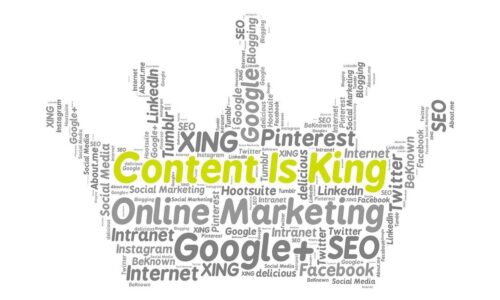
How Customer Equity Shapes the Future of Marketing
In the ever-evolving landscape of digital marketing, the concept of customer equity stands like a beacon, guiding strategies and decisions with its promise of long-term profitability.
At its heart, customer equity is the total of all discounted lifetime values of a company’s customers, illuminating the intrinsic worth of customer relationships.
As needles in the haystack of data grow ever sharper, businesses leverage analytics to sift through insights, aiming to cultivate these precious bonds.
It’s a dance of numbers and narratives, where every interaction counts and every satisfied customer is a step toward sustainable growth.
Keep reading to unearth the strategies that can transform customer equity from a nebulous idea into a cornerstone of your marketing empire.
Key Takeaways
- Customer Equity Stands as a Central Measure of a Brand’s Cumulative Value From Customer Relationships, Distinct From Brand Equity and Customer Lifetime Value
- Understanding and Increasing Customer Equity Requires Leveraging Big Data Analytics to Tailor Marketing Strategies Towards Personalized and Engaging Customer Experiences
- Personalization and Well-Crafted Loyalty Programs Are Foundational to Strengthening Customer Bonds, Significantly Enhancing Customer Equity
- Employing Sophisticated Analytics to Understand Customer Behavior and Preferences Is Crucial for the Proactive Development of Marketing Strategies That Resonate on a Personal Level
- Measuring the Impact of Customer Equity on Business Growth Involves Tracking Key Metrics Such as Average Customer Value and Customer Retention Rate
Defining Customer Equity in Modern Marketing Contexts

In the labyrinth of modern marketing, the concept of customer equity stands as a beacon, illuminating the path forward for businesses aiming to thrive in the digital era.
By delving into the essence and significance of customer equity, companies can unlock a treasure trove of insights that not only distinguish it from related concepts like brand equity and customer lifetime value but also redefine their approach to building lasting relationships with their clientele.
As the digital landscape evolves, understanding the nuances of customer equity becomes akin to possessing a compass in the vast ocean of online commerce, guiding businesses towards sustainable growth and profound customer connections.
Exploring the Concept and Importance of Customer Equity
At the heart of thriving marketing strategies lies the potent concept of customer equity, a measurement that mirrors the cumulative value of a company’s customer relationships. Unlike fleeting metrics that capture momentary success, customer equity symbolizes the intrinsic strength of a brand through the prism of its most valuable asset: its customers. This paradigm shifts focus from transient interactions to cultivating enduring bonds, anchoring businesses in a position of strength amidst the ever-changing tides of market demands and consumer expectations.
Understanding customer equity unwraps layers of strategic insight, enabling companies to finesse their engagements and foster loyalty that transcends the conventional. It’s not merely about the volume of transactions but about deepening the resonance of each interaction, turning ordinary customers into staunch advocates for the brand. In this realm, customer equity acts as both the map and the compass, guiding firms towards uncharted territories of success by leveraging the profound connection between consumer satisfaction and corporate prosperity.
How Customer Equity Differs From Brand Equity and Customer Lifetime Value
Customer equity, often likened to a lighthouse guiding ships to safer shores, distinctly stands apart from brand equity and customer lifetime value by emphasizing the aggregate worth derived from fostering strong, sustainable customer relationships. While brand equity shines the spotlight on the consumer’s perception and the intangible assets associated with a brand’s power, customer equity anchors its value in the concrete financial contributions of customer relationships over time, akin to a farmer reaping the harvest of diligently sown seeds.
Contrarily, customer lifetime value zooms in on the projection of a single customer’s worth throughout their journey with a brand, similar to studying individual stars within a galaxy. Customer equity, however, captures the collective brightness of all stars, offering a holistic view that encapsulates the total value brought by the entire customer base. This broader perspective equips businesses with the means to navigate the vast universe of market dynamics, distinguishing customer equity as a critical measure for future-proofing marketing strategies.
Now, let’s shift gears and illuminate the pathway where data analytics becomes the beacon of hope for amplifying customer equity. Brace yourself for a journey into the heart of data’s transformative power!
The Role of Data Analytics in Enhancing Customer Equity

In the digital age, where data reigns supreme, the role of data analytics emerges as a cornerstone in enhancing customer equity.
By harnessing the power of big data, businesses gain unparalleled insights into consumer behavior, peeling back layers of preferences, desires, and tendencies that remain hidden to the naked eye.
This treasure trove of information enables marketers to tailor their strategies with precision, engaging with their audience in a manner that resonates deeply and personally.
Techniques that analyze this wealth of data pave the way for a proactive approach to increase customer equity, transforming raw numbers into actionable strategies.
This potent combination of analytics and insight not only refines the understanding of what drives customer loyalty but also sets the stage for innovative measures to foster and capitalize on these invaluable relationships.
Leveraging Big Data to Understand Consumer Behavior
In the vast arena of digital marketing, the application of big data to comprehend consumer behavior acts as a keystone, fortifying the foundations of customer equity. By meticulously analyzing the torrents of data generated every second, businesses can unveil patterns and trends that are invisible to the casual observer: a necessary step in sculpting marketing strategies that resonate on a personal level.
| Step in Data Analysis | Impact on Customer Equity |
|---|---|
| Identification of Patterns | Enables personalized marketing strategies |
| Trend Analysis | Forecasts consumer needs and preferences |
| Consumer Behavior Insights | Enhances customer engagement and loyalty |
This strategic employment of big data not only demystifies the enigma of consumer desires but also equips marketers with the tools to forecast future buying behaviors. Armed with this knowledge, companies can not only meet but anticipate the needs of their clientele, crafting experiences that cement long-lasting relationships and, ultimately, uplift customer equity.
Techniques for Analyzing and Increasing Customer Equity Through Data
In a world where data is the linchpin of strategic decision-making, employing sophisticated analytics techniques becomes the sail that propels businesses towards the golden horizon of increased customer equity. Through predictive modeling and customer segmentation, companies can dynamically adjust their sails, ensuring that every marketing effort is not only a gust of wind in their sales but a strategic move towards enriching the value derived from each customer relationship.
Machine learning algorithms stand as the craftsmen of the modern age, sculpting bespoke customer experiences from raw data. By analyzing past consumer behavior, these intelligent systems forecast future trends, enabling businesses to weave the fabric of customer interactions with threads of personalized and contextually relevant content. This meticulous craftsmanship ensures that every touchpoint is an opportunity to reinforce the bond between brand and consumer, elevating the cumulative worth embodied in customer equity.
Bridging the gap from data analytics to relationship building unveils a treasure trove of strategies. Prepare to embark on a journey that transforms customer connections into unparalleled customer equity!
Strategies for Building Stronger Relationships to Boost Customer Equity

In the grand tapestry of modern marketing, stitching together stronger customer relationships is akin to weaving gold into the fabric of a brand’s identity, significantly enhancing customer equity.
Two strands standout in the intricate design of relationship-building: the art of personalization and the crafting of loyalty programs that resonate beyond the ordinary.
Personalization, using a deep understanding of individual customer preferences and behaviors, transforms interactions into meaningful engagements.
It’s like tailoring a bespoke suit that fits perfectly, making the customer feel uniquely seen and valued.
Meanwhile, developing loyalty programs that genuinely encourage repeat purchases act as the thread that binds.
These programs, unlike the trinkets and token rewards of yesteryear, are carefully engineered to foster genuine loyalty, transforming occasional buyers into zealous brand advocates.
Together, these strategies not only fortify the foundations of customer equity but elevate it, promising a future where every marketing effort is a step towards more profound, enduring connections.
Personalization as a Tool for Deepening Customer Engagement
In the quest to elevate customer equity, personalization emerges as a pivotal lever, fine-tuning the melody of customer interaction to the unique frequencies of individual desires and needs. It acts as the skilled artist, carefully modifying its strokes to enhance the depth of the connection between the brand and the consumer, ensuring that each interaction resonates like a harmonious chord, strikingly tailored to the customer’s own narrative.
This bespoke approach leverages sophisticated analytics to dissect and understand the tapestry of customer data, transforming it into actionable insights. By doing so, businesses not only speak directly to the heart of their consumers but also foster an environment where loyalty burgeons, rooted deeply in the fertile soil of personalized experiences. The end result is a robust augmentation of customer equity, with personalization as its cornerstone.
Creating Loyalty Programs That Actually Increase Repeat Purchases
Loyalty programs, when deftly architected, act as the magnetic force that draws customers back, transforming sporadic purchases into a reliable stream of revenue. These schemes, far more sophisticated than the rudimentary point systems of yore, are now infused with a deep understanding of human behavior and consumer psychology, making them irresistible beacons that allure customers into a cycle of returning and buying.
At their core, successful loyalty programs are built upon the bedrock of genuine value, offering rewards that resonate on a personal level with the consumer. This personal touch turns the mundane act of purchasing into a rewarding journey, providing not just incentives for repeat business but also fortifying the emotional connection between brand and consumer. It’s this strengthened bond that elevates customer equity, ensuring that loyalty programs become not just a strategy, but a powerful catalyst for sustainable growth.
As the sun rises on ways to fortify bonds with customers, a new dawn beckons, illuminating the profound effect of customer equity on blossoming business landscapes. This pivotal moment promises revelations on growth like never before.
Measuring the Impact of Customer Equity on Business Growth

In the quest to navigate the digital marketplace, measuring the impact of customer equity on business growth serves as a critical compass, guiding companies through the murkiness of competition towards clear financial success.
It requires the meticulous calculation of key metrics that provide a panoramic view of a company’s customer base health.
These metrics serve as the pulse points of customer equity, diagnosing the vibrancy of customer relationships and their contributions to the company’s lifeline.
Dive into this exploration to unearth the metrics that act as beacons in the dark, illuminating the path to sustainable growth and fortified customer connections.
Key Metrics to Assess the Health of Your Company’s Customer Base
In the voyage of charting business growth through customer equity, companies wield specific metrics as navigational tools. Average customer value emerges as a critical gauge, highlighting the revenue each customer brings over a given period. This metric acts as a beacon, revealing the strength and depth of customer-company rapport, and indicating areas where enhancing satisfaction could spur further growth.
Another illuminating metric is customer retention rate, serving as the pulse that measures the heart’s rhythm of loyalty within the customer base. Its fluctuations provide insights into the gravitational pull of the brand, showcasing the effectiveness of strategies aimed at keeping customers tethered to the company. Tracking these numbers over time offers a panoramic view of the evolving landscape of customer relationships, directing businesses towards fostering enduring connections that drive sustainable success.
Conclusion
Customer equity crucially shapes the future of marketing by serving as a cornerstone in building sustainable business growth.
It transcends traditional metrics, illuminating the value of strong, lasting customer relationships over mere transactional interactions.
With the evolution of the digital landscape, the significance of understanding and leveraging customer equity has never been more profound.
Data analytics and big data play pivotal roles, offering deep insights into consumer behavior and enabling personalized marketing strategies that significantly enhance customer loyalty.
Techniques such as predictive modeling and customer segmentation push businesses towards innovative engagement methods, elevating customer experiences to new heights.
Ultimately, strategies focused on personalization and meaningful loyalty programs further solidify this foundation, promising a future where businesses thrive through the cultivation of deep, enduring connections with their customers.
Thus, customer equity not only guides companies through the complexities of modern marketing but also heralds a new era of strategic thinking centered on the true value of customer relationships.










